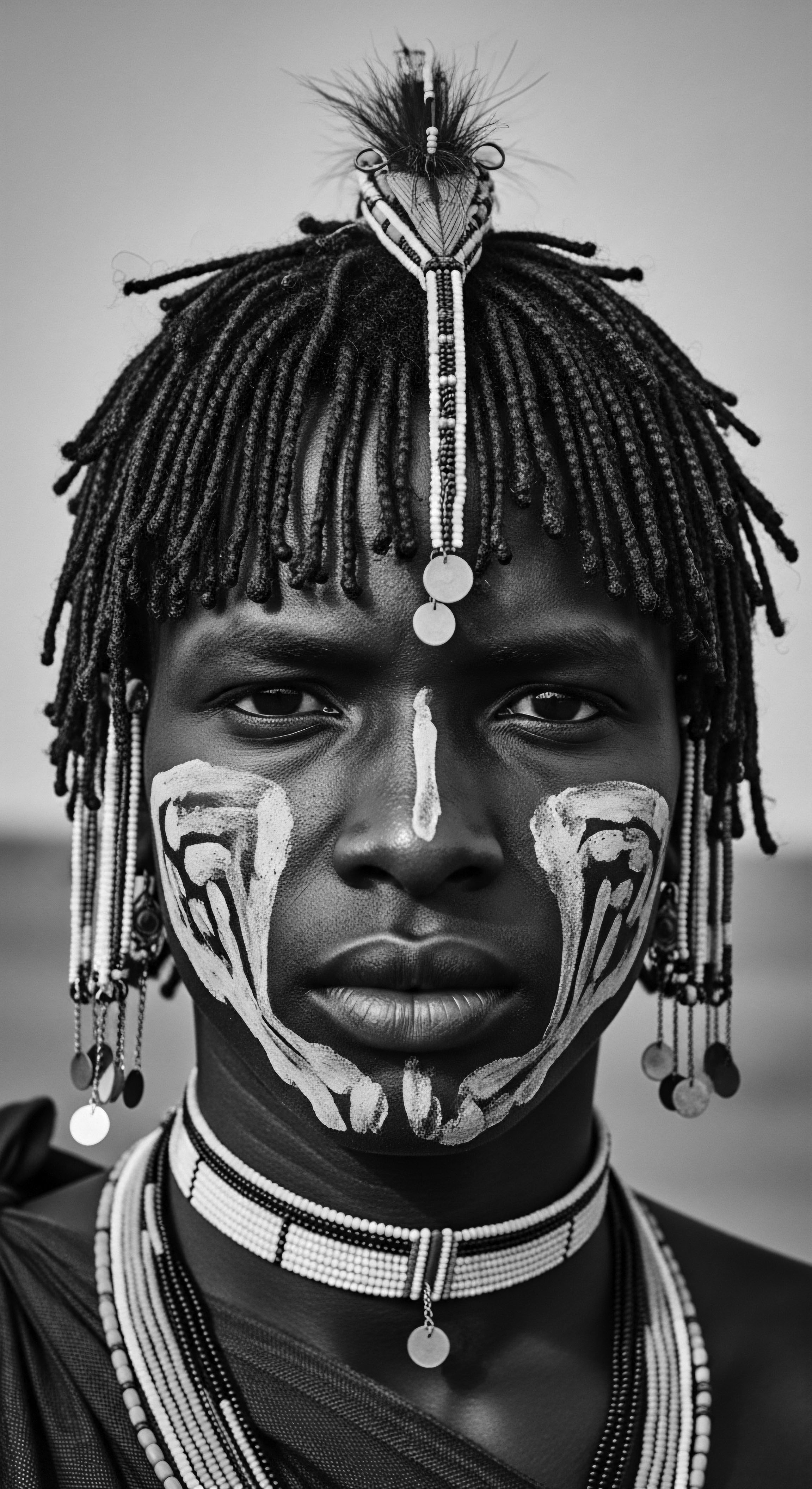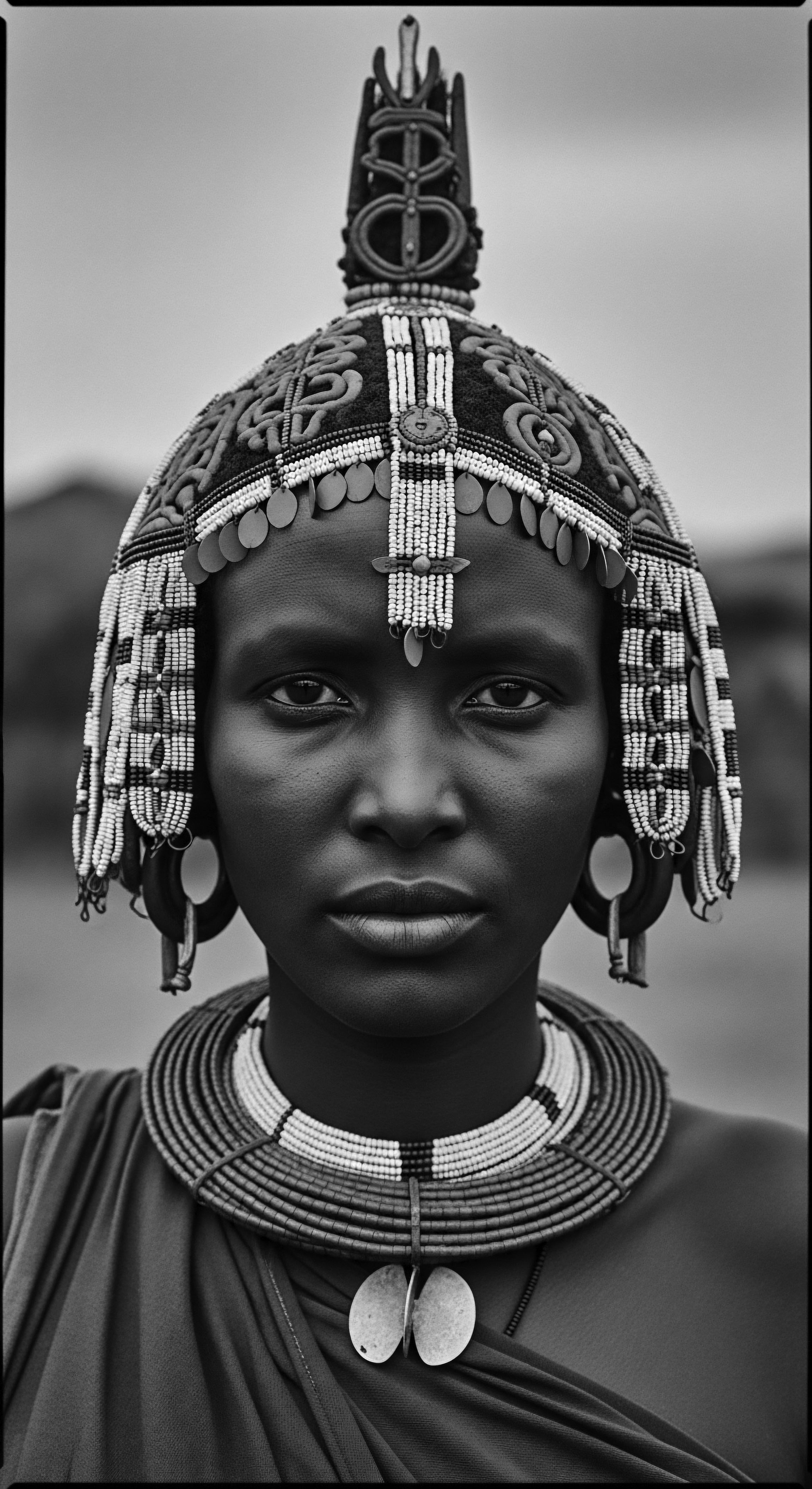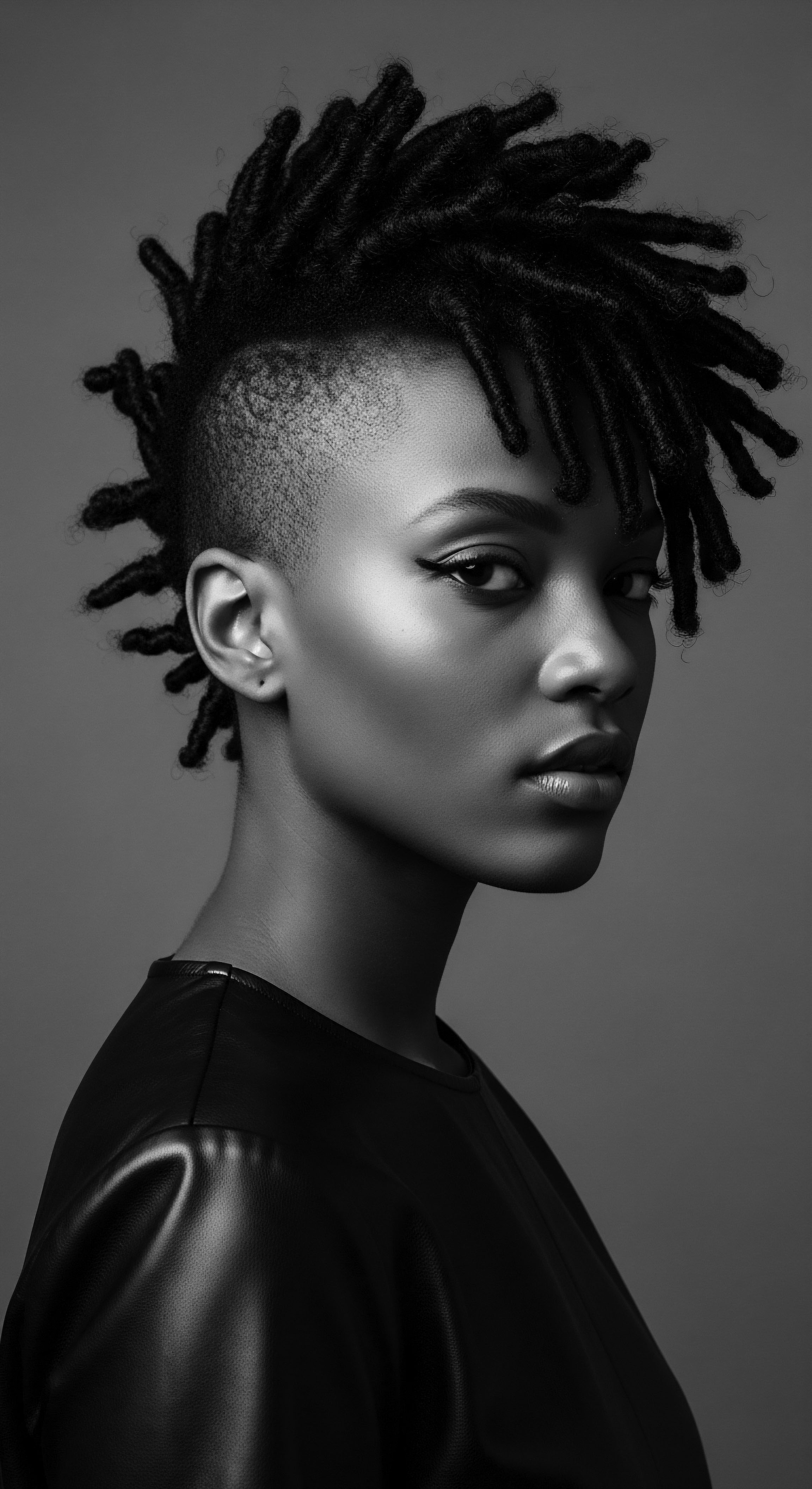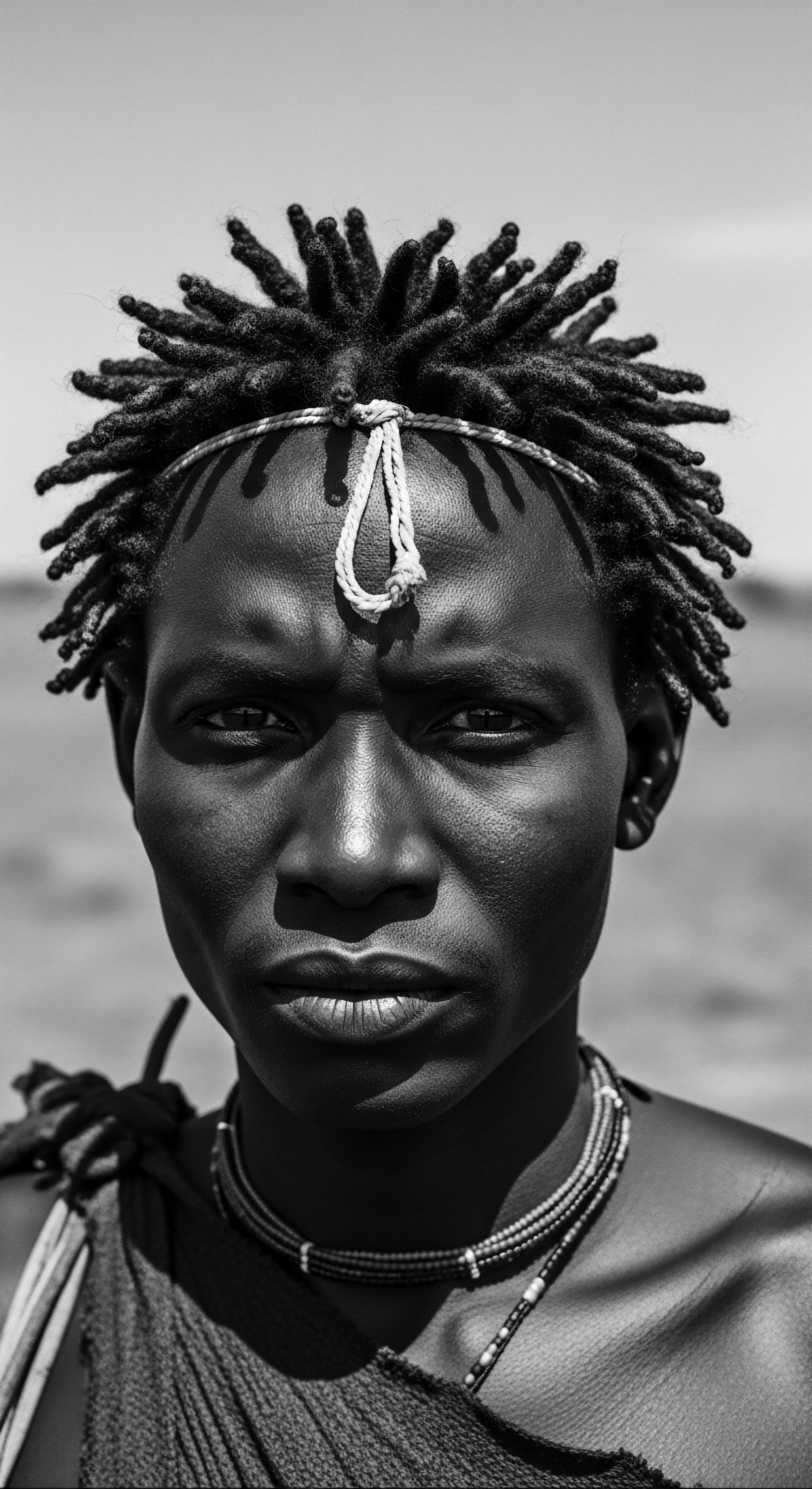
Fundamentals
The concept of Heritage Knowledge unfolds as a living, breathing archive, deeply rooted in the ancestral wisdom of humanity, particularly as it pertains to the intricate nuances of textured hair. It stands as a comprehensive body of understanding, passed through generations, encompassing not only the practical methods of care but also the profound cultural, social, and spiritual meanings ascribed to hair within Black and mixed-race communities. This knowledge encompasses a vast range of practices, ingredients, and philosophies, each a testament to the ingenuity and resilience of those who developed them.
At its simplest, Heritage Knowledge can be understood as the inherited collective understanding. It represents the accumulated wisdom surrounding textured hair, evolving through centuries of lived experience. This includes knowing which plants possess the properties to cleanse or condition, how specific braiding patterns convey messages, or why certain styles provide protection. Its fundamental import rests in recognizing the hair as a vital aspect of identity, a connection to lineage that extends far beyond mere appearance.
Heritage Knowledge is the inherited wisdom, spanning centuries, about textured hair’s physical care and its deep cultural, social, and spiritual meanings.
The initial exploration of Heritage Knowledge begins with its elemental biology, often referred to as “Echoes from the Source.” This aspect considers the inherent characteristics of textured hair – its unique curl patterns, its susceptibility to dryness, its inherent strength, and its fragility. Early communities, long before modern scientific tools, observed these traits keenly. They learned through trial and error, through a deep observation of their environments, how to work with the hair’s natural inclinations, rather than against them. They discerned how certain oils sealed moisture, how specific manipulation techniques prevented breakage, and how shared styling practices built communal bonds.
This foundational understanding, gleaned from generations of careful observation and practical application, laid the groundwork for sophisticated care systems. These systems were often interwoven with daily life, rituals, and rites of passage, affirming hair’s central role in selfhood and community well-being.
- Botanical Remedies ❉ Knowledge of plants like shea butter, aloe vera, and various oils for conditioning and moisturizing textured strands.
- Styling Techniques ❉ Mastery of braiding, twisting, and coiling methods that protect hair from environmental stressors and minimize damage.
- Communal Care ❉ Understanding hair grooming as a shared activity, fostering social connections and intergenerational transmission of skills.
- Symbolic Meanings ❉ Recognition of how specific styles and adornments communicate social status, age, marital status, and spiritual beliefs.

Intermediate
Moving beyond its simple meaning, Heritage Knowledge deepens into a comprehensive understanding of how ancestral practices directly intersect with the physiological needs of textured hair, forming a living tradition of care. This intermediate perspective explores the methods and underlying rationale that allowed communities to sustain hair health and cultural expression without the aid of contemporary scientific instrumentation. It centers on “The Tender Thread,” highlighting the meticulous and often laborious care rituals that became intrinsic to communal life and individual self-perception.
Consider, for a moment, the significance of the communal hair braiding sessions prevalent across numerous West African societies for millennia. These gatherings were not simply about creating a beautiful coiffure; they embodied a profound transfer of Heritage Knowledge. Skilled practitioners, often elder women, shared techniques honed over lifetimes, explaining the particular properties of different plant-based concoctions and the purpose behind each precise movement.
They understood, intuitively, the mechanics of hair manipulation—how tension affects the follicle, how certain patterns minimize stress on the scalp, and how natural oils, like palm oil or shea butter, could nourish the strands (Sharaibi et al. 2024; Odele Beauty, 2024).
Ancestral hair care rituals provided profound physiological benefits for textured hair, alongside cultural expression.
This intermediate stage of understanding Heritage Knowledge allows us to appreciate the scientific validity often embedded within seemingly intuitive traditional practices. For example, the widespread use of hair threading, known as Irun Kiko among the Yoruba people of Nigeria, serves as a testament to this deep understanding. This method involves wrapping hair from root to tip with cotton or synthetic thread, offering significant benefits.
It stretches the hair without requiring heat, minimizing damage from thermal styling, while simultaneously protecting the delicate strands from environmental exposure and locking in essential moisture (Odele Beauty, 2025). The practice itself is a practical application of physics and material science, preventing shrinkage and reducing breakage, thus promoting healthier hair growth over time.
The enduring practice of using particular combs, specifically designed with long teeth and rounded tips, further illustrates this intrinsic connection between historical ingenuity and hair health. These tools, often carved with cultural symbols, served to untangle textured hair with minimal breakage, demonstrating an early understanding of the hair’s unique structural vulnerabilities and needs (Design for All Institute of India, 2021). This historical insight into tool design and application represents a tangible facet of Heritage Knowledge.
The table below offers a comparative view of traditional hair care practices, illustrating how ancestral wisdom aligned with modern scientific understanding in caring for textured hair:
| Traditional Practice/Ingredient African Hair Threading (Irun Kiko) |
| Heritage Knowledge Application Used to stretch hair, create styles, and protect strands from the elements. |
| Modern Scientific Link/Benefit Achieves elongation without heat; minimizes mechanical damage and moisture loss. |
| Traditional Practice/Ingredient Shea Butter (Vitellaria paradoxa) |
| Heritage Knowledge Application Applied as a moisturizer, sealant, and scalp treatment for hair health. |
| Modern Scientific Link/Benefit Rich in fatty acids and vitamins (A, E, F), providing deep conditioning, anti-inflammatory properties, and a protective barrier against moisture evaporation. |
| Traditional Practice/Ingredient Communal Braiding Sessions |
| Heritage Knowledge Application Opportunity for skill transfer, social bonding, and creation of protective styles. |
| Modern Scientific Link/Benefit Reduces daily manipulation, thereby decreasing breakage; strengthens community ties, which supports mental well-being and consistent care routines. |
| Traditional Practice/Ingredient Traditional Combs (long-toothed, rounded) |
| Heritage Knowledge Application Used for detangling and styling textured hair with gentleness. |
| Modern Scientific Link/Benefit Minimizes snagging and pulling, preserving the cuticle layer and preventing structural damage to coily strands. |
| Traditional Practice/Ingredient These examples highlight how inherited wisdom, born from intimate observation and generational transmission, intuitively provided solutions that modern science now validates. |
The deliberate choice of specific botanical elements within ancestral care systems further points to a sophisticated practical ethnobotanical understanding. Beyond shea butter, countless other plant materials were—and continue to be—utilized. Coconut oil, aloe vera, and various herbal extracts, for example, have long been prized for their nourishing attributes and ability to sustain hair health and shine in African communities (Bebrų Kosmetika, 2024).
This deep appreciation for natural resources, and the skilled application of these resources, forms an indelible part of the Heritage Knowledge reservoir. It illustrates a cyclical relationship where nature provides, wisdom interprets, and tradition preserves.

Academic
The academic delineation of Heritage Knowledge transcends rudimentary definitions, positioning it as a complex, dynamic epistemic system. This system is distinguished by its intricate interplay of biological understanding, historical continuum, and psychosocial resilience, particularly as it pertains to textured hair within Black and mixed-race communities. It encompasses not merely a collection of facts or techniques, but a profound theoretical and practical framework that undergirds human interaction with physiological attributes and their symbolic representations across cultural landscapes. This scholarly examination of Heritage Knowledge requires a critical lens, acknowledging its systematic evolution and its enduring significance despite historical attempts at subjugation.
The meaning of Heritage Knowledge, within an academic context, represents an anthropological and sociological construct. It describes the intergenerational transmission of expertise, adaptive strategies, and cultural practices concerning a specific domain of human experience, often rooted in traditional ecological knowledge. For textured hair, this translates into a holistic body of understanding that recognizes the hair not as a static biological feature, but as a living entity, deeply symbolic and intrinsically linked to identity, spirituality, and social standing (Johnson & Bankhead, 2014, p.
86). Such knowledge is frequently embodied in ritual, communal activity, and oral tradition, resisting linear categorization found in Western scientific paradigms.

The Unbound Helix ❉ Hair as a Chronicle of Resistance and Identity
To adequately grasp the depth of Heritage Knowledge, one must examine its profound connection to human agency and resistance, particularly evident within the narratives of enslaved Africans and their descendants. The transatlantic slave trade orchestrated a systematic attempt to dismantle cultural identity, often commencing with the shearing of hair upon arrival, an act intended to dehumanize and sever ties to ancestral lands and traditions (Odele Beauty, 2021; Nuevo Noir, 2024). Yet, within this brutal context, hair became a silent, potent canvas for defiance.
A powerful historical instance that illuminates this resilience is the documented use of cornrows by enslaved women in the Americas. These intricate braided patterns were more than just a means to keep hair neat under harsh conditions; they functioned as clandestine maps to freedom. Specific patterns, the direction of braids, or the inclusion of certain adornments, reportedly communicated escape routes, safe houses, or even hid valuable items like seeds for survival (Odele Beauty, 2024; Odele Beauty, 2021). This sophisticated, covert communication system showcases the ingenious application of Heritage Knowledge under extreme duress.
It demonstrates how embodied ancestral practices became a vital instrument for self-preservation and collective liberation. The very act of braiding, often done in secret, served as a communal ritual, strengthening bonds among the enslaved and preserving fragments of their fragmented identities (OkayAfrica, 2024).
Within the context of slavery, cornrows became covert cartographies, demonstrating Heritage Knowledge as a vehicle for liberation and survival.
The persistence of these practices, even when legislated against—such as the 18th-century Tignon Laws in Louisiana, which compelled free Black women to cover their hair—further underscores the inherent resilience of Heritage Knowledge. Women ingeniously transformed these forced head coverings into elaborate, often jeweled, statements of dignity and style, subverting the oppressive intent and reclaiming agency through adornment (USC Dornsife, 2016; Ari Party Hair, 2025). This historical trajectory reveals hair as a dynamic medium through which communities expressed sovereignty, sustained identity, and transmitted coded wisdom across generations.

The Biology of Textured Hair and Inherited Care
From a biological standpoint, Heritage Knowledge accounts for the unique follicular morphology of textured hair, characterized by its elliptical cross-section, tight coiling, and numerous cuticle layers. This morphology often results in heightened susceptibility to dryness and breakage due to less efficient sebum distribution and increased friction points along the strand (Caffrey, 2023). Ancestral practices, refined over millennia, inherently addressed these biological realities.
- Topical Nutrition Strategies ❉ The widespread traditional application of indigenous plant oils and butters, such as shea butter and palm oil, offers profound insights into topical nutrition. These applications provided essential lipids and emollients that compensated for the hair’s natural propensity for dryness, sealing moisture into the cuticle and reducing inter-fiber friction. Modern ethnobotanical studies now identify a plethora of African plants used for hair care, with some research exploring connections between topical nutrition from these plants and conditions like hair loss (MDPI, 2024).
- Protective Styling as Biomechanical Preservation ❉ Styles like cornrows, twists, and Bantu knots, deeply embedded in Heritage Knowledge, serve as biomechanical interventions. They minimize manipulation, reduce exposure to environmental aggressors (sun, wind), and prevent tangling, thereby mitigating mechanical stress that often leads to breakage in delicate textured strands. This protective function aligns with contemporary trichological principles emphasizing low-manipulation regimens for optimal hair health.
- Scalp Health and Microbiome Awareness ❉ Many ancestral practices placed significant emphasis on scalp health, utilizing natural cleansers and astringents from plants to maintain a balanced scalp environment. While not articulated in microbiological terms, these practices intuitively fostered a healthy scalp microbiome, which current dermatological research increasingly recognizes as fundamental to robust hair growth and overall hair vitality.
The academic inquiry into Heritage Knowledge also examines the long-term consequences of its suppression and resurgence. Historical biases against textured hair, often rooted in colonial and post-slavery beauty standards, led to the widespread adoption of chemical straighteners and other damaging practices, which severely compromised hair health for generations (Kilburn & Strode, 2021). The modern natural hair movement, therefore, represents a conscious reclaiming of this inherited wisdom, a return to practices that honor the hair’s natural state and its cultural lineage. This contemporary movement validates the enduring efficacy of Heritage Knowledge, affirming its relevance in fostering both physical wellness and psychological empowerment within the diaspora.
Furthermore, a critical examination reveals how Heritage Knowledge, though often marginalized in formal scientific discourse, frequently pre-empted or paralleled discoveries in modern cosmetology and dermatology. The intuitive understanding of emollients, humectants, and protective barriers, gleaned from generations of direct observation and experimental refinement, showcases a profound form of empiricism. This inherited expertise offers a rich, often untapped, resource for innovation in hair science, urging a reciprocal exchange between traditional wisdom and contemporary research. Such an interdisciplinary approach strengthens our collective understanding of hair biology and culturally appropriate care.

Reflection on the Heritage of Heritage Knowledge
As the discourse surrounding textured hair deepens, the very idea of Heritage Knowledge emerges as a profound and unending narrative, a continuous echo from ancient hearths to contemporary digital spaces. It is a testament to the enduring spirit of communities who, through centuries of adaptation and unwavering dedication, have preserved and expanded a treasury of wisdom. This knowledge, intricately woven into the fibers of Black and mixed-race identity, continues to offer not just methods of care, but avenues for self-discovery and collective affirmation.
The journey through Heritage Knowledge, from elemental biology to the nuanced artistry of ancestral practices, reminds us that hair is never simply strands of protein. It is a conduit, a visible thread connecting us to those who came before, to their struggles and triumphs, to their ingenuity and their spiritual understanding of the world. Each braid, each coil, each carefully applied oil holds within it a whisper of history, a memory of resilience, and a blueprint for cultivating both external beauty and internal fortitude.
This profound connection to ancestral wisdom, to the very fabric of one’s lineage, transcends fleeting trends or imposed standards. It encourages a reverent dialogue with our bodies and our past, inviting us to find harmony in the inherited rhythms of care. The knowledge passed down, often quietly and with great purpose, stands as a vibrant, living library, constantly replenished by new generations who learn, adapt, and teach.
Ultimately, the future of textured hair care, in its deepest sense, resides in honoring this sacred trust. It calls for an open heart to the lessons of generations, a discerning mind to the science that affirms ancient truths, and a spirit willing to celebrate the unique, beautiful complexities of every strand. This continuous act of remembering and practicing Heritage Knowledge ensures that the soul of a strand, rooted in deep history, continues to flourish, strong and unbound.

References
- Afriklens. (2024, November 1). African Hairstyles ❉ Cultural Significance and Legacy. Afriklens.
- Ari Party Hair. (2025, February 18). The History and Symbolism of Hair Wrapping Across the African Diaspora. Ari Party Hair.
- Bebrų Kosmetika. (2024, August 23). The Power of Hair in African Folklore ❉ Rituals and Traditions. Bebrų Kosmetika.
- Byrd, A. & Tharps, L. L. (2001). Hair Story ❉ Untangling the Roots of Black Hair in America. St. Martin’s Press.
- Caffrey, C. (2023). Afro-textured hair. EBSCO Research Starters.
- Creative Alia. (2024, March 27). Descriptions of some traditional West African hairstyles still worn today #66. Creative Alia.
- Design for All Institute of India. (2021, January 2). Hair then, hair now ❉ African styling becoming leisure for all.
- Johnson, D. J. & Bankhead, A. (2014). Black hair and hair texture ❉ Cultivating diversity and inclusion for Black women in higher education. Emerald Insight, 86.
- Khumbula. (2024, April 16). A Crowning Glory ❉ Hair as History, Identity, and Ritual. Khumbula.
- Kilburn & Strode. (2021, October 29). Afro-texture ❉ a hair-story. Kilburn & Strode.
- MDPI. (2024, February 1). Cosmetopoeia of African Plants in Hair Treatment and Care ❉ Topical Nutrition and the Antidiabetic Connection? MDPI.
- Noireônaturel. (2024, January 1). How frizzy hair saved the lives of slaves. Noireônaturel.
- Nuevo Noir. (2024, March 16). The history of Afro hair. Nuevo Noir.
- Odele Beauty. (2021, February 22). 6 Things Everyone Should Know About Black Hair History. Odele Beauty.
- Odele Beauty. (2024, January 16). A History Lesson On Hair Braiding. Odele Beauty.
- Odele Beauty. (2025, May 9). African Hair Threading ❉ History, Benefits, and How-To Guide. Odele Beauty.
- OkayAfrica. (2024). A Regional Walk Through The History of African Hair Braiding. OkayAfrica.
- Sharaibi, O. J. Oluwa, O. K. Omolokun, K. T. Ogbe, A. A. & Adebayo, O. A. (2024). Cosmetic Ethnobotany Used by Tribal Women in Epe Communities of Lagos State, Nigeria. Journal of Complementary Medicine & Alternative Healthcare, 12(4), 555845.
- USC Dornsife. (2016, October 18). Kinky, curly hair ❉ a tool of resistance across the African diaspora. USC Dornsife.
